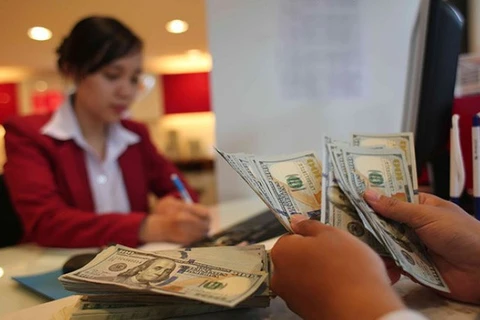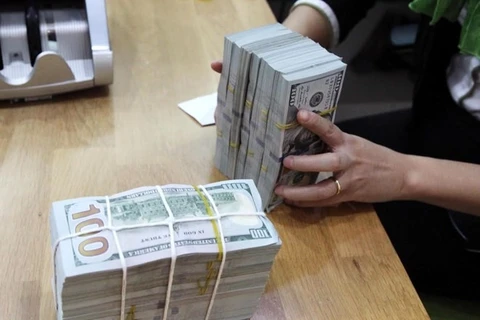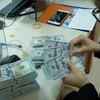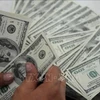Hanoi (VNS/VNA) - Since the beginning of the year, the State Bank of Vietnam has been increasing the reference rate of the dong against the US dollar, and the Vietnamese currency has appreciated 0.43 percent as a result.
The buying and selling prices of the dollar are now at 23,200 VND.
The central bank has bought nearly 5 billion USD worth of the greenback in the first two months of the year, increasing its foreign reserves significantly.
The supply of dollars has also increased thanks to the fact that foreign portfolio investors have been on a buying spree on the stock market.
The inflow this year has been worth 150 million USD.
Foreign direct investment has risen 2.5 times from the same period last year to 8.47 billion USD.
Overseas remittances also saw a sharp increase.
The central bank is allowing the dong to strengthen though there is no pressure on the currency and foreign exchange reserves are plentiful.
In 2016, Vietnam decided to announce a daily reference rate for the dong against the dollar each day, shifting from a fixed rate, to enable more flexibility.
The adjustment is based on daily changes to eight foreign currencies that strongly affect the Vietnamese economy: China’s yuan, Europe’s euro, Japan’s yen, the Republic of Korea’s won, Taiwan’s new dollar, Thailand’s baht, Singapore’s dollar, and the US dollar.
But experts said though the reference rate is announced daily, there is a big gulf between it and the rate in the market.
The dollar has, in the unofficial market, been much weaker than in the banking system.
For instance, on March 11 the buying price of the dollar on the unofficial market was 23,205 VND compared to 23,160-23,180 VND in the official channel, while the selling price was 23,215 VND compared to 23,170-23,190 VND.
Market observers said the Vietnamese currency weakened slower on the official market because the SBV capped its buying price at 23,200 VND to the dollar based on the central rate.
Some analysts disagreed with the central bank’s policy.
But many others said agencies in charge of monetary policy have their own reasons to decide on the reference rate.
The central bank wants to narrow the gap between the dong and other currencies in the region.
In 2018 the dong weakened by only 2.2-2.3 percent against the dollar while many other currencies in the region fell sharply. For instance, the Chinese yuan fell by 5 percent.
To weaken the dong, the central bank bought large quantities of the greenback. Exporters are not complaining since their products are becoming more competitive with the depreciation of the Vietnamese currency.
The analysts also said the central bank’s decision to lower the central rate and weaken the dong is also aimed at aligning the currency closer to the market rate.
This would help the central bank gradually realise its goal of doing away with the current policy of setting the reference exchange rate and having a /- 3 percent band within which banks can set their rates.
The analysts said enterprises with transactions denominated in dollars should take preventive action like hedging to avoid losses when the foreign exchange rate fluctuates strongly.-VNS/VNA
VNA























